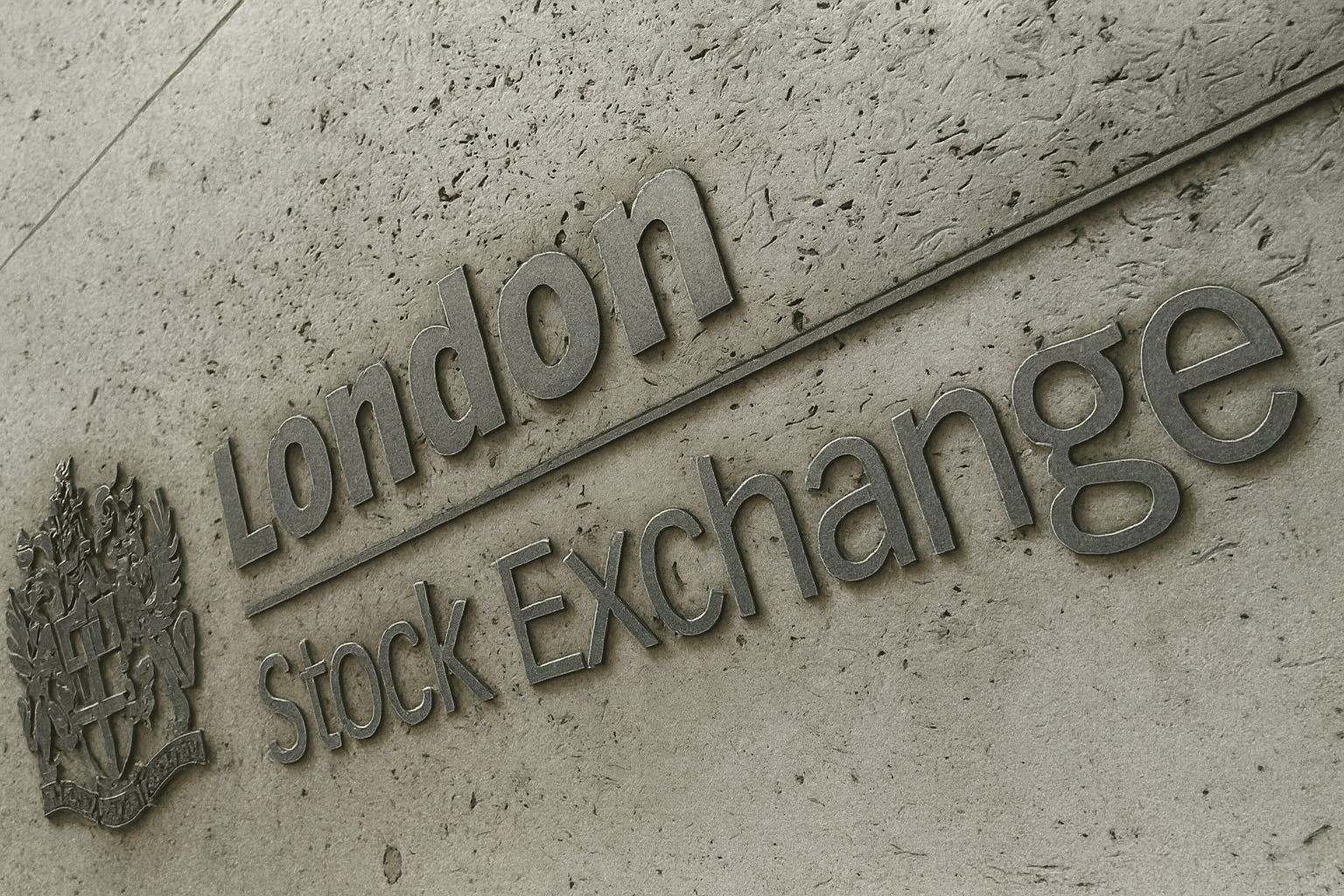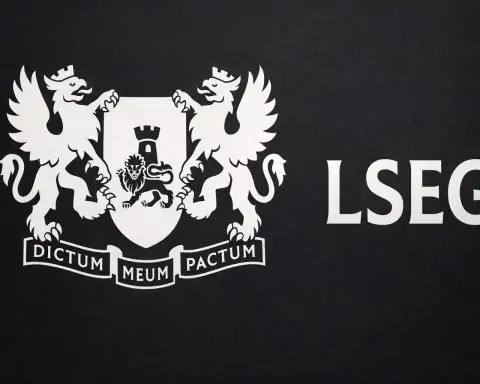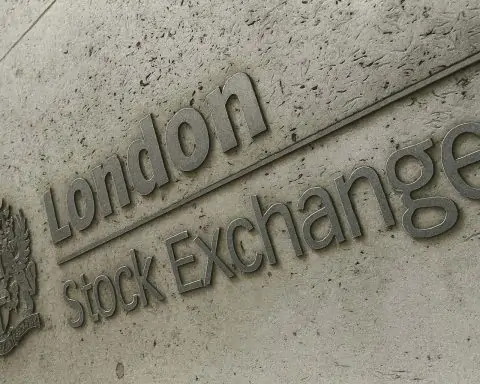London’s stock market ended firmly higher on Wednesday as Chancellor Rachel Reeves delivered her Autumn Budget, a tax‑raising package that still reassured investors and sparked a broad-based relief rally in equities, gilts and sterling. The FTSE 100 closed up about 0.9% at 9,691.58, while the more domestically focused FTSE 250 climbed 1.2%, its best session in more than a month. [1]
Market moves came against a backdrop of pro‑equity measures aimed at reviving the London Stock Exchange – including a temporary stamp duty holiday for new listings and a cut to the tax‑free cash ISA allowance – alongside significant tax rises designed to rebuild fiscal headroom.
FTSE 100 and FTSE 250: How the UK stock market closed today
By the closing bell on 26 November 2025:
- FTSE 100: up 82.05 points (+0.9%) to 9,691.58, its strongest day in two weeks. [2]
- FTSE 250: up 268.11 points (+1.2%) to 21,885.52, the index’s best daily gain in more than a month. [3]
- AIM All‑Share: edged 0.2% higher, reflecting a more modest move in smaller growth names. [4]
The rally extended Tuesday’s positive tone, when the FTSE 100 had already risen around 0.8%, and pushed both major UK benchmarks further off their early‑November wobble. [5]
Intraday, trading was volatile. A technical error at the Office for Budget Responsibility (OBR) saw parts of its Budget assessment accidentally published more than half an hour before Reeves stood up in the Commons, prompting a short‑lived sell‑off in morning trade. The FTSE 100 briefly slid from around 9,651 to near 9,593 before recovering sharply once investors heard the full Budget details. [6]
Why Reeves’ Autumn Budget triggered a relief rally
Despite being unequivocally tax‑raising, the Budget was broadly interpreted as fiscally cautious rather than reckless – crucial for bond markets and sterling, and by extension for UK equities.
Key fiscal points that shaped market reaction:
- Around £26 billion in extra taxes: delivered through measures such as freezing income tax thresholds for a further three years, higher rates on dividends, property and savings income, plus adjustments to salary‑sacrifice pension contributions. [7]
- OBR “headroom” surprise: the fiscal watchdog now projects almost £22 billion of space against borrowing rules in five years’ time – more than markets expected and roughly double previous estimates. [8]
- GDP outlook: the OBR nudged up its growth forecast for 2025 to around 1.5%, while trimming projections for subsequent years, reinforcing the sense of a cautious, back‑loaded fiscal tightening path. [9]
For markets, the crucial message was that Reeves has opted to front‑load credibility and back‑load pain. Analysts noted that the big tightening measures – such as the continued income tax threshold freeze – do much of their work towards the end of the forecast horizon, leaving near‑term growth only modestly constrained. [10]
That balance helped deliver what one strategist described as a “tolerable” Budget for markets: no dramatic shocks for investors, but enough fiscal discipline to prevent a repeat of the 2022 gilt crisis.
Bonds and sterling: gilts rally as investors buy the UK story
The most immediate vote of confidence came from the bond market:
- 30‑year gilt yields fell by roughly 10–11 basis points to around 5.21%, the biggest daily drop since April, as investors piled into long‑dated UK debt. [11]
- Sterling strengthened by around 0.5%, trading close to $1.32 against the US dollar after the speech, having been broadly steady earlier in the day. [12]
Commentators pointed to three main reasons for the positive reaction:
- Bigger safety buffer – the sharply higher fiscal headroom reduces fears of further emergency tightening or surprise tax U‑turns. [13]
- No radical borrowing splurge – despite targeted giveaways and sector‑specific reliefs, the overall path for borrowing still shows debt falling as a share of GDP over the forecast period. [14]
- Supportive global backdrop – expectations of another US Federal Reserve rate cut and a broad global equity rally are already nudging investors back into risk assets, including UK stocks and bonds. [15]
For UK equities, lower gilt yields and a firmer currency help underpin confidence that the Budget will not destabilise the macro environment – a key concern after recent years of political and fiscal turbulence.
Sector snapshot: banks and miners lead, housebuilders and beverages lag
Banks enjoy a tax reprieve
Financials were among the biggest winners on the day. The Budget did not introduce a fresh, sector‑specific bank levy or increase the existing surcharge on bank profits – something that had been heavily trailed as a risk in advance. [16]
- The FTSE 100 banking cohort rose about 2.1%, with Standard Chartered climbing nearly 3% and Barclays up just over 3%. [17]
- Domestic lenders including Lloyds Banking Group and NatWest also rallied as investors removed the overhang of a new windfall tax. [18]
A firmer pound and falling gilt yields further supported the sector by signalling a reduction in systemic risk and funding stress.
Miners ride gold and copper higher
Mining stocks were another standout:
- Precious‑metals miners gained about 5% as a group, helped by gold prices hitting their highest level in over a week amid growing expectations of a December Fed rate cut. [19]
- Fresnillo, Endeavour Mining and Hochschild Mining posted gains of roughly 5–6%. [20]
- Industrial miners such as Anglo American and Antofagasta advanced more than 2% as copper prices firmed and optimism around a possible Russia‑Ukraine peace framework supported risk assets. [21]
The combination of a weaker dollar, lower long‑term yields and renewed risk appetite created a sweet spot for the sector.
Gambling stocks surge on bingo duty cut
Reeves’ reforms to gambling taxes triggered dramatic moves in leisure names:
- Bingo duty will be abolished from its current 10% rate from April next year, sending shares in Rank Group, which owns Gala Bingo, up more than 20% from their intraday lows. [22]
- Entain, owner of Ladbrokes and Coral, also jumped by around 12% from its pre‑Budget levels as fears of tougher horseracing taxes failed to materialise. [23]
- On the flip side, Evoke, owner of brands including William Hill and 888, slumped after remote gaming duty was lifted from 21% to 40%, a move expected to raise about £1.1 billion by 2029–30. [24]
The mixed outcome illustrates the Budget’s highly targeted approach: relief for bricks‑and‑mortar bingo and pubs, but a heavier burden for online gaming operators.
Property and housebuilders under pressure
Despite the overall rally, housebuilders struggled:
- The sector initially dropped as much as 4% during the speech amid concerns about higher taxes on high‑value properties and the broader squeeze on disposable incomes. [25]
- Stocks such as Berkeley Group, Taylor Wimpey, Persimmon and Vistry later clawed back part of those losses, but Berkeley still finished down almost 3%. [26]
Reeves also announced a council tax surcharge on homes worth more than £2 million – a move investors fear could weigh on the top end of the housing market. [27]
Consumer names: beverages down, pubs relieved
Consumer stocks painted a nuanced picture:
- Beverage giants lagged the market, with Diageo slipping around 1% as investors fretted over subdued volume growth and the squeeze on consumer spending power. [28]
- Conversely, pub operators such as Mitchells & Butlers and JD Wetherspoon saw buying interest after the Chancellor left alcohol duty unchanged, offering some respite from rising wage and National Insurance costs. [29]
Big structural changes: ISA rule shake‑up and a stamp duty holiday for new listings
Two flagship measures were clearly designed to push more domestic capital into UK equities and revive London’s appeal as a listing venue.
Cash ISA allowance cut to £12,000 from 2027
From the 2027/28 tax year, the annual tax‑free cash ISA limit will fall from £20,000 to £12,000. People over 65 will retain the full £20,000 allowance, but younger savers will need to allocate at least £8,000 of a full £20,000 ISA into risk assets such as stocks or funds. [30]
The Treasury’s argument is straightforward:
- Around £300 billion is currently parked in low‑yielding cash ISAs.
- Redirecting more of that into stocks and shares ISAs should boost long‑term returns for savers and deepen the domestic investor base for UK companies. [31]
Markets responded quickly. Investment platforms and wealth managers including AJ Bell, abrdn and St James’s Place all traded higher as investors priced in structurally higher demand for equity products. [32]
Critics, however, warn that cutting the allowance could hurt building societies reliant on retail cash savings and may not overcome cultural resistance to stock market risk without a parallel push on financial education. [33]
Three-year stamp duty exemption for new London listings
In a direct attempt to jolt London’s public markets out of their IPO rut, Reeves also announced a three‑year exemption from the 0.5% stamp duty currently levied on purchases of newly listed shares on the London Stock Exchange. [34]
- The policy is explicitly aimed at reversing a trend of UK‑founded companies choosing New York or other venues over London, often citing higher valuations and deeper liquidity abroad. [35]
- Stamp taxes on shares have already fallen by around 15% in revenue terms over the last two years, underlining how trading activity has shifted. [36]
LSE chief executive Julia Hoggett welcomed the move as an “important first step”, while some market participants continued to argue for the complete abolition of stamp duty on share trading to fully revitalise UK capital markets. [37]
Valuations and the global backdrop: why international investors are watching
Even after this year’s rally, UK stocks still trade at a substantial discount to US peers. Late in November:
- The FTSE 100 was valued at roughly 13 times forward 12‑month earnings, compared with about 22 times for the S&P 500. [38]
That gap is one reason why overseas investors are paying attention to UK policy. If Reeves’ Budget is seen as credible, pro‑investment and politically durable, it could encourage incremental capital inflows into a market that looks cheap on traditional metrics.
Globally, today’s moves also sit within a wider risk‑on rotation:
- The Reserve Bank of New Zealand cut rates, reinforcing a narrative of easing monetary policy in parts of the developed world. [39]
- US data has been soft enough to bolster expectations of another Federal Reserve rate cut in December, pushing gold to a two‑week high and lifting global equities. [40]
These tailwinds have helped the FTSE 100 grind back towards recent record levels after touching an all‑time closing high earlier in November. [41]
What today’s UK stock market move means for investors
For traders and longer‑term investors alike, several themes emerge from today’s action:
- Policy risk has eased, not disappeared
Markets have priced the Budget as prudent but heavily back‑loaded. That means future governments will still have to deliver on planned tax rises and spending restraint to keep gilt investors on side. Any sign of backtracking could revive volatility in both bonds and equities. [42] - Domestic UK plays may be re‑rating from a low base
The FTSE 250’s outperformance today – and its strong sensitivity to UK‑specific news – underlines how beaten‑up many domestically focused names are after several years of underperformance versus the FTSE 100. [43] - Banks, miners and select financials look like early Budget winners
Relief over avoided bank‑specific taxes, combined with global rate‑cut hopes and firmer commodity prices, has pushed these sectors into the spotlight. Whether that persists will depend on how the global cycle evolves and how quickly higher taxes begin to bite elsewhere in the economy. [44] - Property and consumer names remain a policy battleground
Extra taxes on high‑value homes, squeezed household budgets and shifting gambling duties leave parts of the property and consumer complex facing a tougher medium‑term backdrop, despite today’s partial recoveries in some housebuilders. [45]
For now, though, the headline is simple: the UK stock market has given Reeves’ second Budget a cautious thumbs‑up, with a clear preference for globally exposed banks and miners, ISA‑linked financials and selective domestic recovery plays.
Market data and policy details are accurate as of the London close on 26 November 2025.
References
1. www.lse.co.uk, 2. www.lse.co.uk, 3. www.lse.co.uk, 4. www.lse.co.uk, 5. www.investing.com, 6. www.ii.co.uk, 7. www.lse.co.uk, 8. www.reuters.com, 9. www.lse.co.uk, 10. www.lse.co.uk, 11. www.reuters.com, 12. www.reuters.com, 13. www.reuters.com, 14. www.gov.uk, 15. www.marketpulse.com, 16. www.ii.co.uk, 17. www.lse.co.uk, 18. www.ii.co.uk, 19. www.lse.co.uk, 20. www.lse.co.uk, 21. www.lse.co.uk, 22. www.ii.co.uk, 23. www.ii.co.uk, 24. www.ii.co.uk, 25. www.ii.co.uk, 26. www.lse.co.uk, 27. www.lse.co.uk, 28. www.lse.co.uk, 29. www.ii.co.uk, 30. www.reuters.com, 31. www.reuters.com, 32. www.reuters.com, 33. www.reuters.com, 34. www.reuters.com, 35. www.reuters.com, 36. www.reuters.com, 37. www.reuters.com, 38. www.bloomberg.com, 39. www.marketpulse.com, 40. www.marketpulse.com, 41. en.wikipedia.org, 42. www.lse.co.uk, 43. www.lse.co.uk, 44. www.lse.co.uk, 45. www.lse.co.uk










